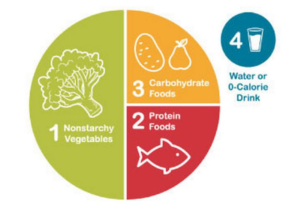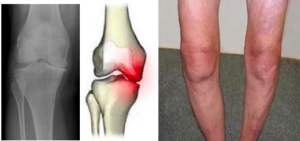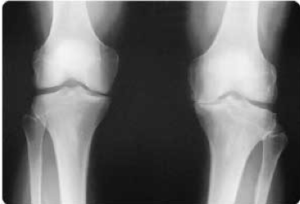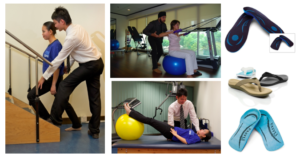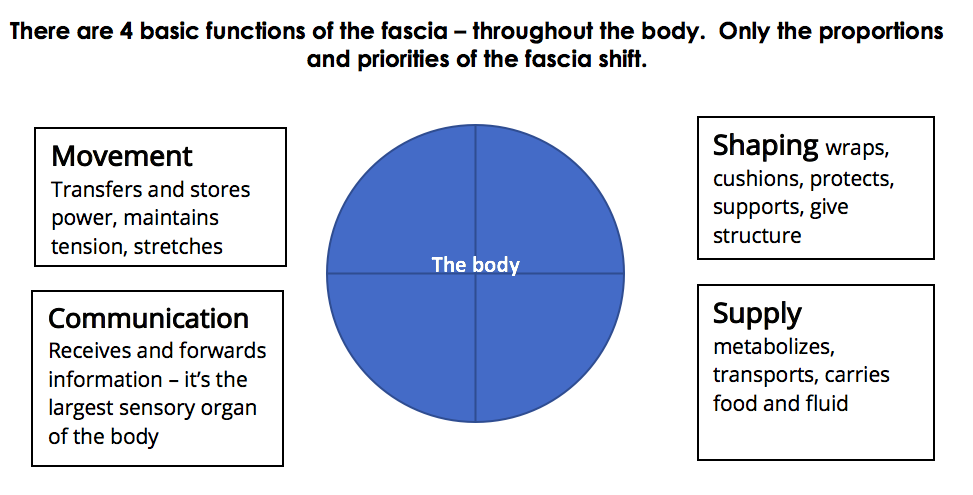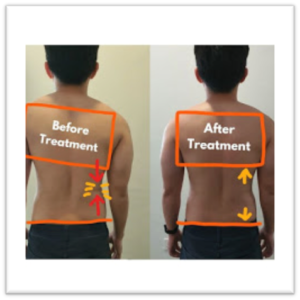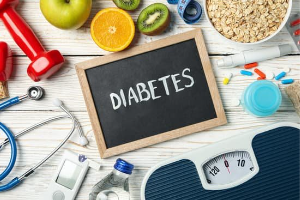 15 Nov 2022
15 Nov 2022
Diabetes; how to live and manage your diet?
Diabetes has become a very prevalent medical condition in the last decade. Many say it is due to the change in the daily lifestyle, which has negatively impacted our dietary patterns and level of physical activity. Let’s take a look at what’s happening locally, get advice from our dietician and then learn to manage your diabetes and live a happy, fulfilled life.
Diabetes in Zambia
In 2016, a sample population of 45,767 Zambians found that 3.5% were Diabetic, and 34.5% were unaware of their diagnosis. Of the individuals diagnosed with diabetes, 66% of those Zambians were not on any treatment, and 34% had a blood glucose level beyond the recommended levels of > 7.8 mmol. That’s a lot of people without the necessary information they might need to live safely with diabetes.
Management of Diabetes
Unfortunately, a vast majority believe having diabetes can be managed by limiting or eliminating sugars. However, the management of the disease is more than that. Several nutrients influence the health of an individual with diabetes. However, even though people with diabetes must observe several nutrients, nutritional management of diabetes is not complex.
Where do carbohydrates fit in?
Carbohydrates are a critical nutrient for individuals diagnosed with diabetes. There are two types of carbs, which are complex and simple and have varying effects on your blood sugar.
A complex carb (whole grains, legumes, vegetables) is made of sugar molecules that take time to break down to provide energy. Thus having a blunt impact on blood sugar.
Simple carbs are individuals’ sugars and are broken down rapidly to give energy and tend to cause a spike in blood sugar (processed foods, candy, sugary beverages).
Complex carbs are also high in fibre, which is the slowest to digest. Therefore this is critical in keeping blood sugars under control. People with diabetes must understand that if you have this condition, you don’t have to eliminate carbs but be wise and opt for high-fibre carbs. Additionally, avoid eating large portions at one time rather than eating smaller and more frequent meals throughout the day.
What about fats?
The next critical nutrient to monitor is the consumption of fats. People with diabetes are at a higher risk of heart disease, so they must follow a heart-healthy diet. A heart-healthy diet tends to focus more on unsaturated fats such as nuts, seeds, and seafood and limit foods rich in saturated fats such as proceeds food and red meat products.
Additionally, fibre-rich foods assist in controlling blood sugar and help manage cholesterol levels, therefore, heart healthy and help manage diabetes. Decreased sodium consumption is also essential in maintaining blood pressure and aids heart health. It is important to limit sodium consumption to 2300 milligrams grams per day which is equivalent to1 a teaspoon a day.
People with diabetes need to follow four basic rules when it comes to meals;
- Aim to fill half of your plate with non-starchy vegetables (spinach, asparagus, green beans, bean sprouts, peppers, carrots, eggplants, mushrooms etc.). The more significant section is allotted to foods low in carbs. Still, it has copious amounts of vitamins, minerals and fibre, which is a critical part of the diet.
- A quarter of the plate should be carbohydrates such as brown bread, brown rice, whole wheat pasta or starch vegetables such as corn, potatoes, peas and pumpkin; Dairy foods such as milk, yoghurt, cheese, sour milk, soy milk etc. and fruits (fresh, juiced or dried).
- The remaining quarter of the plate must be lean animal or plant-based proteins. There is an emphasis on eating lean meats as these are heart-healthy.
Animal-based include;
- fish
- seafood
- chicken
- turkey
- lean cuts of beef or pork
- eggs,
- low-fat cheese and cottage cheese.
Plant-based proteins include;
- soy
- lentils
- quinoa
- chia seeds
- hemp seeds
- tempeh
- beans
- nut butter
4. Hydrate by consuming low-calorie drinks, such as water, unsweetened tea, coffee, or fresh fruit juice.
Integrative Nutrition & Managing Diabetes
While paying attention to what you eat if you have diabetes is essential, it is also important to consider ways to live life to the fullest. The Institute of Integrative Nutrition encourages people to look at what nourishes a person beyond the actual food on the plate. One must consider what satisfies them, such as relationships, physical activity, career, and spirituality. These lifestyle factors are considered to be a person’s primary food, while the food on your plate, is considered secondary food.
Three Lifestyle Habits to practice daily if you have a Diabetes Diagnosis
-
Meal planning and timing
Preparing your meals ahead of time can help you better manage your lifestyle with diabetes. Consider how to fit having balanced meals & snacks into your already hectic daily life. Planning is key. Consider sitting down every weekend to plan your meals for the week ahead. Make time to batch cook. Double the recipe and freeze the other half, ensuring you have healthy options for weeks when life gets too busy to focus on food. Don’t be afraid to ask for help. Meal planning and prepping when you have diabetes can be tricky, but the payoff can be significant.
-
Physical Activity
Regular exercise is an important lifestyle habit to have while managing diabetes. Exercise can improve insulin sensitivity for people with diabetes during and after exercise. For those with type 1 diabetes, exercise can help the insulin from your medication be more bio-available to your body. Physical activity may help bump up the production of your brain’s feel-good neurotransmitters, called endorphins. Although this function is often referred to as a runner’s high, aerobic activity, such as a game of tennis or a nature hike, can contribute to this feeling. As per the CDC, the recommended goal is to get at least 150 minutes of moderate-intensity physical activity per week. Before starting an exercise program make sure to check-in with your physician.
-
Emotional Health and Stress
Stress can increase your heart rate and cause the release of hormones like cortisol and adrenaline that spike blood sugar levels. Research also suggests that stress is a lifestyle factor contributing to the development of type 2 diabetes, as stress hormones inhibit insulin-producing cells in the pancreas from working correctly. As you probably know, stress can cause a person to reach for unhealthy food options, such as comfort food that might be higher in sugar. You must be aware of how stress can sabotage your insulin and have a plan regarding how to deal with stress. Stress management techniques include guided meditation, deep breathing, management of social media/news exposure and connection with others.
In a nutshell
A Diabetes diagnosis does not have to stop you from living your life to the fullest. The good news is that diet and lifestyle changes can go a long way in helping you to manage the disease. Your body is unique, and with time and energy, you can learn how your body responds to food and the environment you live in. Using meal planning, exercise and stress reduction is a great way to tune into what your body is telling you and help you live the life you want.
 05 Nov 2022
05 Nov 2022
Stress, burnout, year-end fatigue: how to deal with it ??
As the end of the year approaches, people reflect on their resolutions made to determine if they achieved the goals they had set for themselves. Working through deadlines before the holidays and finding the time for family and children can be challenging.
Sometimes having too much going on in your life and feeling like you are on a hamster wheel with no time to stop and relax creates a feeling of being overwhelmed. Not only that, but you may feel anxious and constantly anticipate what comes next.
Stress is a feeling where the body is not at ease but rather tense and jittery.
Stress refers to physical or emotional tension. When under pressure, it becomes overwhelming, and you cannot cope or meet specific demands. Anxiety then changes how you feel, think, and act and your body’s regular functions.
Stress can be acute or chronic.
- Acute stress results from something unexpected happening, such as the loss of a loved one.
- Chronic stress occurs over a prolonged period and is often due to daily difficulties such as a highly demanding job.
 The body’s way of coping is by releasing hormones. It makes the brain more alert, causes muscles to tense and speeds up your pulse rate. This works to your advantage as you can better cope with the stressor. In the long term, having the body in a constant state of “fight or flight” increases the risk of developing or exacerbating certain conditions, such as anxiety and depression, skin conditions, hair loss, ulcers and heart disease.
The body’s way of coping is by releasing hormones. It makes the brain more alert, causes muscles to tense and speeds up your pulse rate. This works to your advantage as you can better cope with the stressor. In the long term, having the body in a constant state of “fight or flight” increases the risk of developing or exacerbating certain conditions, such as anxiety and depression, skin conditions, hair loss, ulcers and heart disease.
Common effects of stress:
- Muscle tension or pain
- Fatigue
- Headaches
- Chest pains
- Diarrhoea or constipation
- Weakened immune system
- Anxiety
- Depression
- Quick to anger
- Feeling restless
- Lack of motivation or focus
- Over or under eating
- Substance abuse
- Exercising less
Ways you can deal with stress.
Acknowledging the presence of stress allows you to cope healthily and appropriately before burnout. Awareness of what brings about chronic stress will allow for action to be taken before the tension begins to negatively impact your physical and mental health.
- Getting regular physical activity – exercise releases endorphins or “happy hormones”, which boost your mood and also calm the body and mind.
- Spend time outdoors – taking a walk outdoors can help clear your mind and forget about your stressors for a while, giving you a reset. This will enable you to deal with situations more calmly with a clear head. Exposure to greenery enables one to process thoughts more clearly.
- Practising relaxation techniques – according to a study, deep breathing can enhance relaxation and decrease stress by activating the parasympathetic nervous system and inhibiting the sympathetic nervous system.
- Get a massage – getting a Swedish massage can reduce cortisol, the stress hormone, levels, and can boost dopamine, the feel-good hormone.
- Meditate – meditation can help to ground you and clarify your purpose and how you want to live your life.
- Have a sense of humour – Laughter is the best medicine. It uplifts the mood and is a shock absorber of stress. Find humour in situations you find yourself in to avoid going down the rabbit hole of anxiety and negative dialogues in your mind.
- Have quality time – spend time with those important to you.
- Take up a hobby – find an activity that calms you and uplifts your mood.
- Talk to someone – this will make you feel less isolated, your burdens feel lighter, and help you with decision-making through exposure to alternate perspectives.
- Legs up on a wall posture – holding this position for 10-20 minutes daily is therapeutic for the whole body, in addition to helping with stress and anxiety.
How practitioners can help
At Lusaka Chiropractic, the multi-disciplinary team can assist in stress relief and address chronic stress’s effects.
Chiropractic treatment addresses the nervous system. Treating the spine will help the nervous system, which is a significant stress response component.
Massage therapy manages soft tissue health. Tension in muscles can lead to tension-related headaches and backache; releasing this decreases muscle pain, improves the range of movement, improves circulation and decreases cortisol levels.
Myofascial release focuses on connective tissue. The myofascial release will affect our nervous system because the fascia is a connective tissue that surrounds every body part. Only once the habitual patterns of the fascia are changed can one start to address the chronic tension.
Tension Release Exercises activate the natural tremoring effects of stress release. TRE is a series of simple exercises to assist the body in releasing deep muscular patterns of stress, tension and trauma. It activates a natural reflex mechanism of shaking or vibrating that releases muscular tension, calming down the nervous system and restoring balance.
Body Stress Release therapy aims to improve the body’s self-healing mechanism. It looks to unlock muscle tension stored in physical structures, which results in nerve compression, causing a disturbance in the body’s communication system.
To book, call your preferred clinic: click here
In Conclusion
Try to avoid burdening yourself with what was not achieved this year or what you still need to complete… instead, take on board as much as you can. Push yourself knowing your limits and goals and when to step back and be proud of small wins. With distant families possibly coming to visit soon, focus on seeing them and being present rather than the nerves of what chaos might erupt.
Remember, the key to dealing with stress, nerves, and chaos is identifying what stresses you out, knowing which coping mechanisms work best for you, getting help when needed and not being afraid to set boundaries.
 16 Sep 2022
16 Sep 2022
Chiropractic care during pregnancy, a personal note from Dr Dayna Lombard.
If you don’t know me, I am Dr Dayna Lombard, one of three Chiropractors from Lusaka Chiropractic & Wellness. I’m currently 27 weeks pregnant with our first babe and, thankfully, enjoying my pregnancy. I had learnt all about the tremendous changes in the female body in my studies. Still, it’s been so exciting to realize the genuinely extraordinary potential of the female body first-hand. Pregnancy is the only season during a women’s life where we will have two hearts, two brains, four lungs and two souls confined within one skeleton. It’s exciting and such an adventure, but with all these positive emotions of pregnancy may come a few “not so nice” factors too… Nausea in the first trimester, hip pain, lower back discomfort, pelvic pain, insomnia and pure exhaustion. The excellent news is… Chiropractic can assist you!
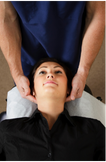 Being a chiropractor, I have always believed that a balanced spine and pelvis, ensuring a balanced nervous system, is imperative to our overall health and well-being. Add a baby developing inside a female body – this is even more important than ever as chiropractic care now is for two bodies in one. Chiropractic care during pregnancy is safe and effective in assisting with mum’s aches and pains and ensuring that the babe sits comfortably in the pelvis. Over nine months of pregnancy, a woman’s body goes through massive changes as the ligaments and muscles stretch and change angles to allow the growing fetus to sit and develop comfortably and eventually be in that perfect position for the birthing process.
Being a chiropractor, I have always believed that a balanced spine and pelvis, ensuring a balanced nervous system, is imperative to our overall health and well-being. Add a baby developing inside a female body – this is even more important than ever as chiropractic care now is for two bodies in one. Chiropractic care during pregnancy is safe and effective in assisting with mum’s aches and pains and ensuring that the babe sits comfortably in the pelvis. Over nine months of pregnancy, a woman’s body goes through massive changes as the ligaments and muscles stretch and change angles to allow the growing fetus to sit and develop comfortably and eventually be in that perfect position for the birthing process.
As a pregnant woman, taking care of your body means creating an environment for your baby to thrive. Regular chiropractic check-ups to ensure less joint, muscle, and nerve pain are integral to your overall well-being and make a good foundation for your babe.
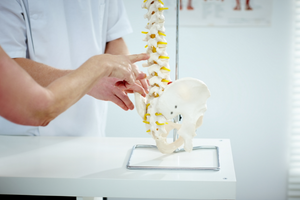 Research has shown that women who receive regular chiropractic care during pregnancy have faster labour and recovery after birth. We use less twisting and rotation through the spinal segments as the relaxin hormone prepares your ligaments for delivery, and the adjustments are very controlled and gentle. It is highly recommended that you continue with chiropractic care after the birth. Just as your body changes during pregnancy, your body will need to find its way back to its stability and strength after childbirth. While your hormones fluctuate for a few months after the birth, you may have a crying babe and sleepless nights. The stress of being a new mum – chiropractic can assist you with getting your body more comfortable. At the same time, you navigate the waters with your new babe, recover from the birthing process and get your little one accustomed to the big world outside the womb. Don’t forget to have your little one checked out too! Chiropractic care for paediatrics is an excellent, drug-free way of helping your baby with latching, feeding, burping, sleeping, colic and constipation, to name a few…
Research has shown that women who receive regular chiropractic care during pregnancy have faster labour and recovery after birth. We use less twisting and rotation through the spinal segments as the relaxin hormone prepares your ligaments for delivery, and the adjustments are very controlled and gentle. It is highly recommended that you continue with chiropractic care after the birth. Just as your body changes during pregnancy, your body will need to find its way back to its stability and strength after childbirth. While your hormones fluctuate for a few months after the birth, you may have a crying babe and sleepless nights. The stress of being a new mum – chiropractic can assist you with getting your body more comfortable. At the same time, you navigate the waters with your new babe, recover from the birthing process and get your little one accustomed to the big world outside the womb. Don’t forget to have your little one checked out too! Chiropractic care for paediatrics is an excellent, drug-free way of helping your baby with latching, feeding, burping, sleeping, colic and constipation, to name a few…
I hope I have shed some light on how Chiropractic care could help you and your journey through pregnancy. If you are still looking for more information, please contact one of our clinics or download our brochure.
My next blog post will be coming out early next year once my little one has arrived and we have started chiropractic care from the newborn stages. Keep a look out for that post as I run through the effects of pregnancy, birth and life outside the womb on a newborn baby and how chiropractic can assist with more than just alignment but contribute to your family’s overall health and wellness.
 15 Aug 2022
15 Aug 2022
What is a Diet?
When we think of the word diet, it is often associated with an unpleasant method of losing weight. We see this when food companies market with the word diet to showcase foods with low to zero calories, such as diet beverages. However, the traditional definition of the word diet is the customary amount and kind of food and beverage consumed by an individual daily. Nevertheless, many health professionals refer to the word diet as the food or drinks an individual consumes daily and the mental and physical circumstances connected to eating. A diet should be more than merely eating good nutrition; it is about nourishing foods. We are what we eat; diets are also affected by the life phase or the environment. An individual’s diet typically results from their degree or situation at that point in life.
How Does a Diet Impact Our Health?
The impact of diets/dieting on our health has become adverse with time. Technology has subjected us to copious amounts of information. However, it is tricky to identify legitimate data that scientifically prove illegitimate data. Trendy diets such as keto, intermittent fasting, juicing, Atkins, south beach etc., are constantly evolving as well as the nutritional research. However, one thing remains accurate study after study; good food choices have a positive impact whilst poor food choices negatively affect your health. For instance, a fad diet such as the low-fat diet encourages an individual to think that fats are the culprit and, in return, try and eliminate all types of fats in their diet. However, research suggests that eating the correct type of fats is essential to health and disease prevention. A low-fat diet decreases the body’s ability to produce estrogen and progesterone. This is because all hormones are made from fat and protein. Another example of adverse effects of dieting is when individuals opt for a low carb diet, i.e. Keto diet or any other restrictive diet, rapid weight loss is often associated with loss of bone density. Therefore, it is always critical to seek counselling from a dietitian who can guide you through your goals without negatively impacting your health.
What Is Considered a Healthy Diet?
As per World Health Organization (WHO), a healthy diet defends your body against malnutrition in all its forms and is a foundation for health and development. A healthy diet is also crucial in preventing noncommunicable diseases such as diabetes, cardiovascular diseases, certain cancers, and conditions associated with obesity. Lack of physical activity and an unhealthy diet are major worldwide threats to health.
When Should Healthy Eating begin?
A healthy diet starts early in life with breastfeeding and educational interventions for young children and parents. These benefits are reflected in higher academic outcomes, productivity, and lifelong health.
What Entails in a Healthy Eating Diet?
We all need to consume a healthy and balanced diet. A balanced diet has enough protein, fat, carbohydrates, fibre, vitamins, and minerals to sustain a healthy body. Eliminating specific categories from your diet is not always the way to achieve your targets, but wisely opt for healthier options from all the food groups.
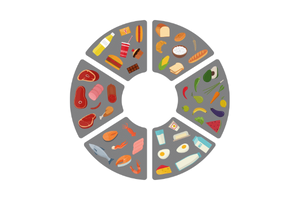 Why Should I Include These Food Groups in My Diet?
Why Should I Include These Food Groups in My Diet?
- Carbohydrates – is the primary source of energy for our body. Always opt for complex, unrefined carbs such as fresh vegetables, fruits, and whole grains instead of refined carbs and sugars. Limit the consumption of white bread, pastries, starches, and simple sugars, as they spike blood sugars, fluctuate moods/energy levels and end up as fat around your waist.
- Protein– provides energy for your daily activities and supports mood and cognitive function. Still, excessive protein consumption is dangerous for individuals with kidney disease. However, some researchers promote high protein consumption of plant-based sources instead of animal products to allow your body to obtain the essential proteins it needs.
- Fat-not all fats are bad. Certain fats are crucial in making hormones and protecting heart and brain health. Limit consumption of saturated fats from your diet and opt for foods rich in Omega 3 fatty acids, which are heart healthy.
- Fibre- Include 25-30 g of fibre in your diet through grains, fruits, vegetables, nuts and seeds. Fibre helps you stay regular and lowers your heart disease, diabetes, and obesity risk.
- Vitamins and Minerals. – Our bodies need the benefits of daily vitamins and minerals for hundreds of processes, like building and repairing cells and tissues, powering chemical reactions, and fighting disease. These nutrients are both supplied by foods and made by the body.
How Can I Switch to A Healthy Diet?
Shifting/ introducing a healthy diet doesn’t always have to be cumbersome. It can be a slow and gradual process. You don’t have to eliminate everything at once or even take drastic steps. It will only lead to many cheat meals or not being consistent with your targets.
Approach your goal of a healthy diet with simple/minor modifications at a time. For instance, include a portion of salad with every main meal or opt for grilled/baked foods for every meal instead of deep-fried foods. Or even eating fried foods once a week for one dinner or eating a dessert once a week post one meal. Although the key is to remain consistent, so the small changes turn into habits, and you can continuously add more healthy choices to your diet. It takes up to 66 days for a new change to become a habit. Hence, patience is critical, and results will take time, but the difference will be permanent/habitual.
How To Set Yourself Up for Success?
- Eating healthier is an art. Think of your diet in terms of colour (add more colour by including fruits and vegetables), variety, and freshness. Limit/eliminate processed foods such as deli meats, canned foods, or foods loaded with preservatives; instead, opt for fresh foods.
- Cook big batches of food and freeze. It limits the number of times you do take out. It also helps you determine foods with higher calories, unhealthy fats or chemical additives to control your dietary intake better.
- Opt for the right food changes, cut back on unhealthy (high calorie) foods and replace them with nutrient-dense foods. For example, replace a doughnut with a fruit salad or fried chicken with grilled or baked chicken.
- Learn to read food labels as this provides you with information about what you are putting into your body. Look for crucial hidden factors such as the amount of sugar, unhealthy fats or even what is the recommended portion/serving of the food you are consuming.
- Be mindful of what you are eating as it helps develop healthy habits. Focus on how you feel after consuming a specific meal, understand your energy levels, or even monitor simple things such as your portion size.
- Don’t think of certain foods as a complete elimination or off-limits; instead, think of them in smaller portions or foods you can consume occasionally. Begin with portion control. Reduce the portion sizes of unhealthy, empty, calorie foods. You may notice you don’t desire them as often as you used to or think of them as occasional treats.
- Eat slowly; take your time as it takes a few minutes for your brain to register that your stomach is complete and you have had enough. Food should be considered nourishment rather than something you need to get done before completing your routine tasks.
- Be alert to what you store in your pantry. Eating healthy is tricky if what you stock at home is unhealthy (chips, doughnuts, cookies, carbonated beverages, sugary drinks, etc.)
- Remain hydrated, drink at least 1.5 to 2 litres of fluids daily, and focus on water as your primary source of hydration. Water aids in excreting and flushing out waste by-products from our bodies.
- Eat with family and friends, and limit food consumption whilst being on your electronic gadgets (tv, phone, computer) as these lead to mindless overeating.
- Avoid emotional eating. We often resort to food as a stress reliever or to deal with unpleasant emotions such as boredom, sadness, loneliness etc. However, learn to manage stress or unpleasant emotions by exercising, talking to a therapist or even diverting your mind to house chores or work activities.
Final Thoughts
Diet is a critical part of healthy living, and trying to instil healthy habits from a very young age yields positive results. However, it is always hard to eat healthy due to our situations or stage of life. Nevertheless, it is critical to understand a healthy diet and how one can achieve it without drastically eliminating particular food groups but controlling the quantities consumed. If you would like to learn more about a healthy diet and the changes you need to make in your life to achieve your specific goal, then book an appointment to see a dietitian.
Healthy Eating – HelpGuide.org
How Does Diet Impact Health? | Taking Charge of Your Health & Wellbeing (umn.edu)
 12 Jul 2022
12 Jul 2022
Ever tried Cross training?
Winter is here and exercising in the cold is the last thing we want to do in the morning.
Ever thought of CROSS TRAINING? – Any exercise or activity can be considered if it is not your usual sport/exercise routine.
Weight training and Circuit training are commonly used as cross-training tools.
If you do not have a match/meet/race that you are training for – now is the time to reduce, not stop your running, introduce another sport and stretch your fascia and muscles.
‘The exercises in cross-training provide a break from the normal impact of training in a particular sport, thereby giving the fascia, muscles, tendons, bones, joints, and ligaments a brief break. These exercises target the muscles from a different angle or resistance and work to balance an athlete. Cross-training is an effective way of resting the body from the normal sport-specific activities while maintaining conditioning.’
CROSS-TRAINING PROS
- Cross-training limits injury
- Cross-training allows coaches and athletes to train hard all year round without running the risk of overtraining soft tissue leading to overuse injuries. The straightforward process of changing the type of training changes the stress on the body.
- Cross-training gives muscles used in your primary sport a break from everyday stresses during workouts. This allows the fascia and muscles to recover from the conditioning built up over a season. It is known as ACTIVE REST and is a much better recovery tool than TOTAL REST as it trains the entire body to adapt to different exercise stimuli.
- Cross-training also helps reduce or reverse fascia and muscle imbalances in the body. Additionally, it stabilizes and balances the overall condition of fascia, helping prevent strength imbalance, which could pull the body out of natural alignment.
- Lastly, it aids in preventing muscle strains and tears.
CROSS-TRAINING CONS
Cross-training helps achieve balance in the muscles groups due to training them from different angles and positions, but;
- An intense cross-training schedule without progressing into it gradually can also lead to problems. It is essential to progressively increase the intensity, duration, and frequency in small increments. – For example – A swimmer who has not run before may develop shin splints.
- Cross-training cannot be used as the sole conditioning tool. Sport-specific conditioning and skill honing are still required.
PRECAUTIONS
The most widespread problem associated with cross-training is that people tend to get keen on trying out a new sport because the activity is different. They tend to push themselves harder than they usually would, which could lead to a likelihood of injury.
Below are a few precautions to consider.
- Start slowly if you have never done cross-training before, even if you consider yourself reasonably Cross-training will place different demands on the body and mind; if you are not used to it, it will take a few sessions for your body to adapt to this new form of training. Be patient.
- Your warm-up and cool-down are crucial. Do not start any cross-training workout without a thorough warm-up that includes a fascia stretching routine.
- Proper Technique: Before starting a new activity, get instruction in the sport’s techniques and learn safety measures. Kayaking can be an excellent cross-training activity for swimmers to develop and maintain upper-body endurance. Still, without instruction on techniques and safety, it can be dangerous.
- Equipment: Equipment used for cross-training activities should be appropriately fitted and designed. Unsafe or ill-fitted equipment can lead to injury.

- Overtraining: Many athletes add cross-training to their current program rather than substituting, leading to overtraining and the opposite of the injury prevention goal.
- Stretching and Flexibility: Cross-training, as with any new activity, places new and different demands on the body, so do not forget to incorporate regular stretching and flexibility training into your cross-training routines.
- DRINK WATER – hydrate. We all know that we should – and yet….
 30 Jun 2022
30 Jun 2022
Do You KNEED Help?
Osteoarthritis (OA) is a degenerative joint disease resulting from the breakdown of joint cartilage and underlying bone. The most common symptoms are joint pain and stiffness, which usually progress slowly over the years. Initially, they may occur only after exercise but can become constant over time. It is the most common form of arthritis, affecting more than 32.5 million adults in the United States alone.
OA can affect any joint but typically affects hands, knees, hips, lower back and neck and generally affects individuals older than fifty. However, with the prevalence of sport in society, OA can affect younger individuals too, especially when they succumb to injuries like torn ACL or PCL in the knee or meniscal tears. It generally develops slowly, but the onset can be relatively rapid if associated injuries are present in the joints.
 There is no cure for OA, and prevention is always better than the cure, but there are ways to manage OA to minimize pain, continue physical activities, maintain a good quality of life and remain mobile.
There is no cure for OA, and prevention is always better than the cure, but there are ways to manage OA to minimize pain, continue physical activities, maintain a good quality of life and remain mobile.
Factors that may contribute to the onset of Osteoarthritis (OA) include:
- Age over 50
- A joint injury like torn ACL or PCL of the knee
- Overuse injuries like long-distance runners
- Obesity increases pressure on joints, and fat cells promote inflammation.
- Weak muscles surrounding the joints offer less support to underlying structures
- It affects both genders but is more common in females
- Genetic predisposition
- Musculoskeletal issues such as skeletal misalignment can contribute to early-onset OA.
- Environmental/ Modifiable Factors such as occupation, sport, diet, bone strength
How can we diagnose OA?
- Patient History
- Pain in joints
- Swelling in joint after activities
- Limited range of motion
- Feeling that the common is unstable or wants to “give way.”
- Joint stiffness, especially in the mornings or in colder weather
- Clicking or snapping sounds when moving the joints
- X-rays, MRI, CT
- Blood tests
OA can affect many different areas of the body but one of the more debilitating areas is the knees as this can severely affect ones mobility and ability to enjoy life and do normal day to day tasks. Often, OA when left to progress can lead to extensive joint deterioration and leave no option other than surgery, eg: knee replacement. However, there is now a new form of treatment that can be an alternative to surgery where the OA is not yet at the end stage of severity.
Knee Osteoarthritis
Normal vs Arthritis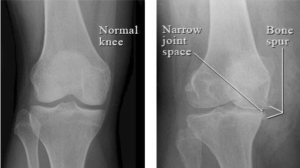
Severe Arthritis
How can we HELP you at Lusaka Chiropractic and Wellness Clinic?
Suppose you are over 50 and have experienced stiffness and pain in your joints, or you are a sportsman who has suffered some severe injuries. In that case, it may be worth your while presenting to the clinic and undergoing an exam so we can make a formal diagnosis and get you treatment ASAP. We can guarantee that OA will not fix itself, and early treatment may prevent the inevitable surgery from happening.
Knee Replacement Surgery
A new treatment alternative for OA is Unloader Bracing
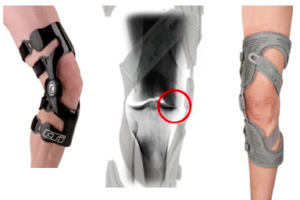 Research has shown that we can stagnate the progression and almost reverse the effects of OA on the knee. A patient can choose to have a fitment of an UNLOADER Knee brace and then inject Stem Cells, Hyaluronic Acid (HA), Synvisc One or PRP injections into the joint space, by an Orthopaedic Surgeon, after the fitment of the braces.
Research has shown that we can stagnate the progression and almost reverse the effects of OA on the knee. A patient can choose to have a fitment of an UNLOADER Knee brace and then inject Stem Cells, Hyaluronic Acid (HA), Synvisc One or PRP injections into the joint space, by an Orthopaedic Surgeon, after the fitment of the braces.
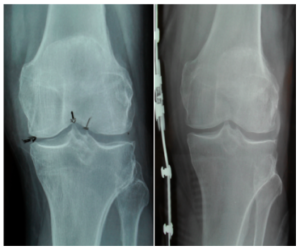 XRay on the left shows grade 2 OA of the medial compartment of the knee before bracing, and the X-ray on the right is the same patient with the UNLOADER knee brace.
XRay on the left shows grade 2 OA of the medial compartment of the knee before bracing, and the X-ray on the right is the same patient with the UNLOADER knee brace.
How do the braces work?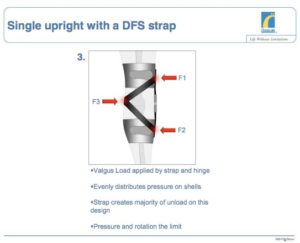 Conclusion
Conclusion
Unloading knee braces decreased pain, improved function, and patients reported increased quality of life during the study time. An UNLOADER brace is a treatment alternative in moderate to severe unicompartmental knee OA
With over 20 Studies worldwide, and over 19 million USD spent on research alone in 2009, the Unloader One is the most researched unloader brace in the world. The Custom Brace has a lifetime guarantee.
So what is the protocol for a patient?
- Make an appointment and get a formal diagnosis.
- Address any musculoskeletal imbalances that might exist that might be contributing or causative factors to the development of the OA.
- If you have moderate OA (grade 2), we can proceed to fit the UNLOADER brace.
- Getting a custom knee brace may be necessary if you have a severe genu varus or genu valgus deformity due to the OA. For this, we take measurements and photos and order the braces directly from the manufacturer, which can take longer to process than an OTS brace.
- During this period, we start Shockwave therapy to reduce the painful bone spurs and heal damaged cartilage. 1/week for five weeks.
- Chiropractic care might be implemented to address any imbalances and improve skeletal and muscular function.
 EST Extracorporeal Shockwave Therapy
EST Extracorporeal Shockwave Therapy
- Our qualified Physiotherapists will start a muscle strengthening program ASAP 2/week for 12 weeks.
- An assessment for orthotic support to stabilize your feet might be recommended.
Rehabilitation
Why suffer when you can live a life without limitations? Book an appointment today!!
Author: Dr Ron van As (Chiropractor)
 23 May 2022
23 May 2022
Exercise is Medicine
Today, the average person often has their fitness or wellness hindered by a medical condition. Safe and efficient exercise training is key to long-term management of medical disorders, be it musculoskeletal such as post-joint replacement surgery or chronic back pain, metabolic such as hypertension and diabetes, neurologic such as post-stroke and multiple sclerosis, or cardiovascular. Exercise does not only manage or prevent medical conditions but also boosts energy levels and your mood and improves your general well-being.
Exercise is medicine. It helps you avoid illness, be healthier and feel happier.
What is Medical Exercise Training (MET)?
Medical Exercise training is the development of safe and effective exercise programs utilizing a protocol-based approach and functional outcome measures for clients with musculoskeletal, metabolic and neurological disorders.
Medical exercise programs are suitable for;
- Joint Replacement surgeries
- Osteoarthritis
- Chronic Lower Back Pain
- Rotator Cuff Tear
- Shoulder Dislocation
- Bicipital Tendinitis
- Tennis and Golfer’s Elbow
- Carpal Tunnel Syndrome
- Disc Herniation
- Lumbar Disorders
- Piriformis Syndrome
- ACL rupture
- Meniscal tear
- Ankle fracture or sprain
- Diabetes and Hypertension
- Multiple Sclerosis
- Cerebrovascular accident/ Post Stroke
- Mental Health
- And many more
When designing a medical exercise program, apart from considering the primary factors such as;
- frequency,
- intensity,
- duration,
- number of sets
- total reps,
Other factors such as restorative rest, healing constraints, tissue tolerance, functional outcomes measures, pain, medication, inflammation and motor function are considered.
The combination of exercise and education produces positive outcomes. Incorporating lifestyle management provides the client with education regarding their specific condition, defined wellness strategies and independent exercise guidelines to hasten functional improvement and alleviate pain.
The goal of a Medical Exercise Specialist is to :
- Restore function and address functional deficits so that an individual has enhanced quality of life and enjoys a more active lifestyle
- Reduce pain and limitations resulting from it
- Improve the quality and efficiency of movement
Where medical exercise fits in?
Exercise becomes a primary tool to address functional deficits following the acute and sub-acute phases of injury. A medical exercise program bridges the gap between healthcare and physical fitness by implementing exercises in the correct dosage and ensuring the technique is correct.
Roles of each Healthcare provider in your long-term fitness
Do you need to see a Medical Exercise Specialist?
There are many reasons to see an exercise specialist, but here are some of the common ones:
1. You suffer from chronic pain
Pain lasting longer than three months is considered chronic. Exercises can be prescribed to help manage the pain and improve your quality of life. Through training and education (for example, the Dynamic Back School), you will have the tools to move, lift, push, pull, carry objects, and perform activities safely and efficiently.
2. You are recovering from an injury
A physiotherapist or chiropractor is involved in the initial/ acute phase of injury treatment. They diagnose and treat you during this stage. Following this, you may be referred to a medical exercise specialist who will assist you with your recovery and minimize the risk of you re-injuring yourself.
3. You have a chronic condition
For people living with chronic conditions, for example, osteoarthritis or diabetes1, factors such as medication, the risk of comorbidities and limitations in range of motion need to be considered.
4. You are about to undergo surgery or are recovering from a surgery
Clinical research indicates that preparing the body through a structured exercise program before surgery reduces recovery time. Similarly, following a medical exercise program tailored to you post-surgery ensures optimal recovery, allowing you to return to daily activities in a pain-free state. Joint replacement surgery is a good example; strengthening and activating muscles surrounding the joint pre-surgery provides excellent stability and reduces recovery time. Reducing muscle tightness post-surgery allows more joint mobility and less pain, allowing you to return to your everyday lifestyle quickly. You can have a more active role in your recovery journey through education and exercise.
The Dynamic Back School
One of the most common injuries is lower back pain. A substantial public health concern plagues the world and is estimated to affect 30-80% of the general population worldwide. It is known to limit a person’s activity level and decrease one’s productivity and overall quality of life.
Low back pain (LBP) is the leading reason for lost work hours and worker’s compensation costs. LBP is also one of the most common conditions managed in MET practices.
Lusaka Chiropractic & Wellness has a dedicated programme to assist our clients and give them the best care we can. The Dynamic Back School is an education and exercise program to help you manage a wide range of spinal conditions. The program will educate you on anatomy and spinal biomechanics, fitness and lifestyle changes to help you strengthen your back, alleviate pain and reduce the risk of future lumbar injuries.
Written by
 21 Apr 2022
21 Apr 2022
Manage your stress with the help of physiotherapy!
Tight deadlines, long commutes stuck in Lusaka traffic, a demanding job, and a poor work-life balance are common causes of daily stress.
We’ve all felt stressed out at some point, but how we manage our stress can significantly impact our overall health and wellbeing.
What is Stress?
The human body is designed to experience stress and react to it, and it keeps us alert, motivated and ready to avoid dangerous situations. When stressed, our nervous system fills the body with hormones that prepare us to run away from or confront these dangers, referred to as the fight/flight mechanism.
In more modern life, stress is a natural feeling of not being able to cope with specific demands and events. These demands can come from work, financial pressures, relationships and other situations, but anything that poses a real or perceived threat or challenge to a person’s wellbeing can cause stress.
 What does stress do to our bodies physically?
What does stress do to our bodies physically?
When stressed, the body produces larger quantities of the chemicals cortisol, epinephrine (Adrenaline) and norepinephrine, and these chemicals trigger the following physical reactions;
- Increased Blood pressure and pulse rise
- Breathing speeds up
- The digestive system slows down (Causing digestive issues like constipation)
- Immune activity decreases
- Heightened muscle preparedness – this is where muscles become tenser, causing aches and pains.
- Alertness – therefore, sleepiness decreases, causing insomnia
What are the different types of stress?
Stress is not only mental or emotional; the environment or our workplace can also cause stress. As well as mental, Stress can be mechanical (caused by repetitive movement, bad posture, sitting or driving for long periods, lifting heavy weights, or overexercising). Stress can even be Chemical if someone is overexposed to toxic substances such as pesticides, smoke, industrial chemicals, and some food additives.
Most mental health experts classify stress into two categories; Acute and Chronic:
Acute Stress: It is usually short term and is the most common form of Stress. Acute stress often develops when people consider the pressures of events that have recently occurred or can happen in the build-up to an event. For example, a person may feel stressed about a recent argument at work or an upcoming ZRA deadline. However, the stress will disappear once someone resolves the dispute or meets the deadline.
Acute Stress does not cause the same amount of damage as long term, chronic stress. Short term effects include tension headaches, sleepless nights, an upset stomach, and a moderate amount of distress. However, when repeatedly exposed to acute stress over an extended period, it can become chronic and harmful to your overall health.
Chronic Stress: this type develops over a long period and is more harmful to our health. Poverty, dysfunctional families or an unhappy marriage are examples of situations that can cause stress to become chronic. Chronic stress makes it very difficult for the body to return to an average level of hormonal activity which can contribute to problems in the following systems:
- Cardiovascular
- Respiratory
- Sleep
- Immune
- Reproductive
A constant state of stress can also increase a person’s risk of Type 2 diabetes, high blood pressure and heart disease. Also, it can lead to depression and anxiety when Stress becomes chronic.
Three different types of stressors can contribute to these types of stress:
- Routine stress, such as childcare, homework, financial responsibilities, being late for a meeting, being stuck in traffic on the South end roundabout, etc.
- Sudden and disruptive changes such as an unexpected death or suddenly losing your job
- Traumatic stress can happen due to extreme trauma, a severe accident, an attack, an environmental disaster, or a war.
How will you notice you are stressed?
There are many physical manifestations of stress; these can include:
- Sweating
- Pain in the back or chest
- Muscle tightness/pain/aches
- Jaw clenching/teeth grinding
- Cramps or muscle spasms – Fainting
- Headaches
- Nervous twitches
- The sensation of pins and needles
- Erectile dysfunction and loss of libido
- Sleeping difficulties
Stress can also provoke emotional manifestations; they include:
- Anger and irritability
- Burnout
- Panic attacks
- Concentration issues
- Depression and sadness
- Fatigue and forgetfulness
- Insecurity and restlessness
When chronically stressed, people can exhibit certain behaviours like:
- Food cravings or eating too little – therefore weight loss or weight gain
- Sudden angry outbursts or crying
- Drug, Tobacco and alcohol misuse
- Gambling
- Participating compulsively in watching TV series, internet shopping, social media etc
- Social withdrawal and Relationship issues
How can we deal with our Stress ourselves?
Dealing with Stress is a personal commitment. It usually necessitates a change in lifestyle, a change in the way we perceive stressful events, and trying to lower the effects our stressors have on our bodies.
I always say the first step to getting better is awareness. Noticing the signs and symptoms of stress is the first step to doing something about it.
The following lifestyle measures can help people to manage or prevent stress-induced symptoms:
- Exercise: Exercise increases your overall health and sense of well-being, putting more pep in your daily steps. But exercise also has some direct stress-busting benefits. It pumps up your endorphins. Physical activity may help increase the production of your brain’s feel-good neurotransmitters, called endorphins.
- Reducing the intake of alcohol, drugs, and caffeine can even increase stress!
- Nutrition & Diet: A healthy balanced diet containing plenty of fruit and vegetables is essential in helping the body through Not Vitumbuwa and fast food!
- Prioritise and time management: It helps to take a little bit of time organising a daily to-do list. Set aside time to manage your schedule and plan some time to relax and perhaps pursue some hobbies. Your priority should be your health, so take time in your day for yourself!
- Breathing and Relaxation techniques: Meditation, breathing techniques, and yoga can help slow down the heart rate, calm down the nervous system and promote relaxation.
- Talking to friends and family helps a person share their troubles and reduces feelings of isolation.
- Notice and acknowledge the signs: it is essential to note when you notice changes in your body and not ignore them. Be mindful of any changes.
- Find your stress-relieving activity. Identify an activity that helps you relax. It could be reading a book, going for a walk, listening to music, having a hot bath, spending time with a pet, going to a yoga class, exercising, singing in a choir, etc.
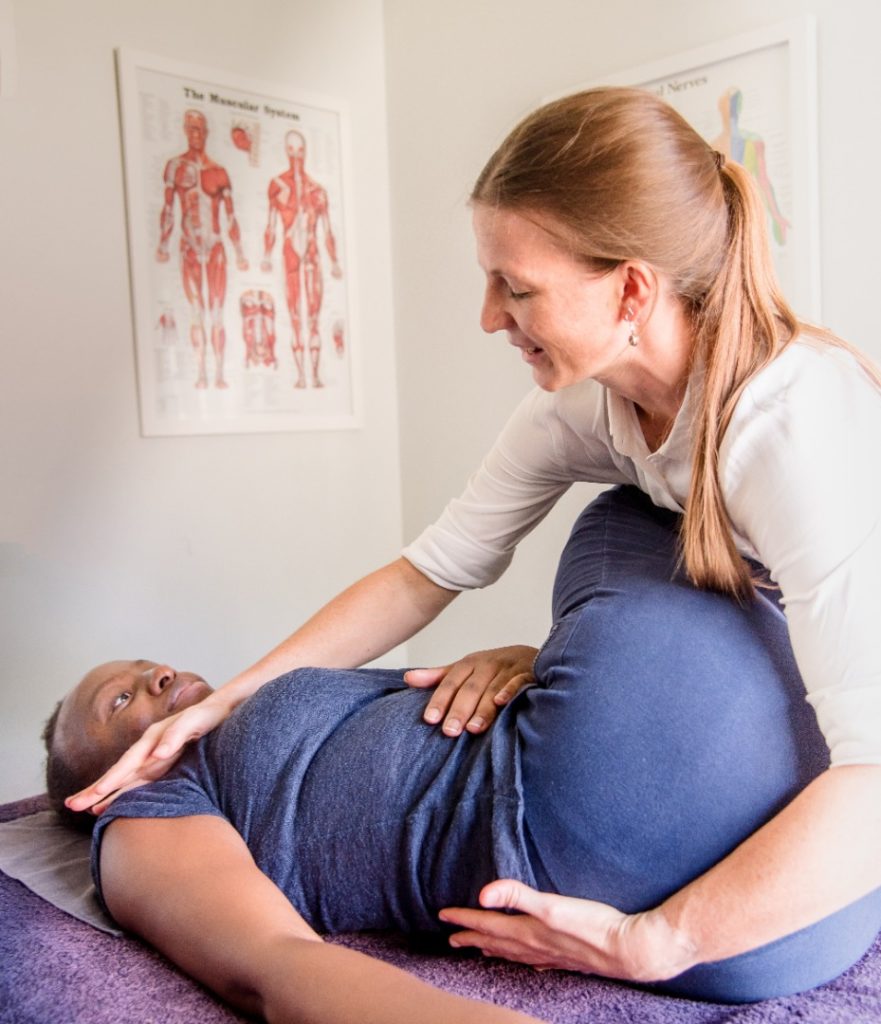 How can Physiotherapy help with Stress?
How can Physiotherapy help with Stress?
Physiotherapy can help manage stress and the symptoms of stress by giving you the time you need for yourself. In a physiotherapy session, we use massage, trigger points, fascia release, cupping, stretches and exercises to correct muscle imbalance, improve strength and reduce pain.
There are many other ways in which physiotherapy can help with Stress:
- Reduce stress sensitivity – exercise prescription is a common element in physiotherapy treatments; studies show that regular exercise can lower perceived Stress by up to 50-78%, which will reduce stress sensitivity and stress symptoms.
- Improve sleep – relaxation techniques, posture training, patient education on lifestyle, and optimal sleep positioning to improve sleep quality and duration.
- Lower cortisol levels – Diaphragmatic breathing is clinically proven to significantly lower cortisol levels, improve relaxation, and improve concentration; a physiotherapist can teach you this.
- Ease depression – through exercise prescription and physiotherapy sessions, as it is clinically proven that exercise is as effective as antidepressants!
- Improve the quality of life – physiotherapy guided exercise improves physical condition, self-esteem, the perception of self-worth, and quality of life.
– Written by Michele Thomas-
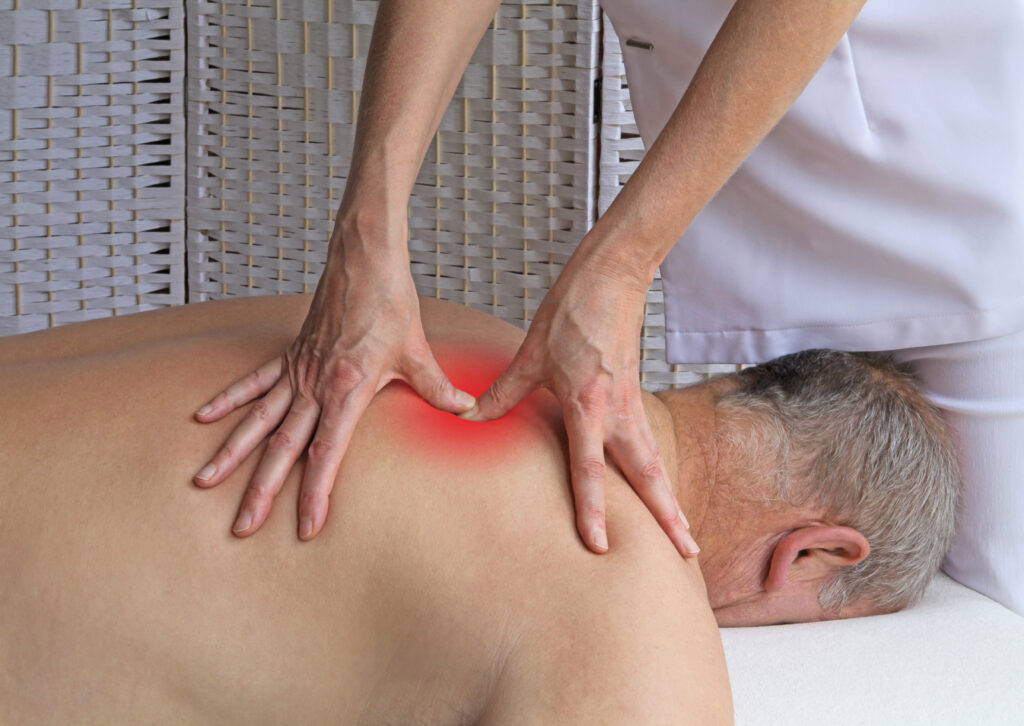 06 Feb 2022
06 Feb 2022
Understanding Myofascial Release therapy
Myofascial release is a type of physical therapy used to treat myofascial pain syndrome.
A basic understanding of the way the body works tells you that it isn’t just the skeletal system of bones, connected to muscles by tendons & ligaments that is at work here.
Something else is holding everything in place within the body: connective tissue called fascia. When you lift the skin of a raw chicken – you’ll come across a transparent, spider webby film. That’s fascia – a continuous casing of connective tissue that surrounds and penetrates everything in the body – veins, arteries, muscles, tendons, ligaments & organs. — it also holds them all in place. Muscles cannot work or keep their shape without fascial envelopes. The features of connective tissue are very important in relation to pain, diseases, and functional limitations.
The term “myo” in “myofascial” is the scientific word for “muscles.” The term “fascia” refers to the connective tissue that surround the muscles. It runs throughout our body and is linked to various organs.
In the past fascia was often overlooked – bodyworkers focused upon using deep pressure to release the ‘knots’ in muscles, without considering that muscles were surrounded by fascia in & that any inflammation, adhesions & difficulty in movement were also affecting the fascia as well. Now medical research is increasingly focused upon the role of fascia in causing aches, pains & restriction of movement within the body.
Correspondingly, a therapy arose to help with it: Myofascial Release
Fascia consists of ground substance, and the proteins collagen, elastin. Each person carries between 18 – 23kg of connective tissue and it stores ¼ of the body’s water, therefore providing the body with food and hydration. The thickness and consistency of fascia depends on its location and the role it plays in the body.
The skeleton is not scaffolding. It cannot stand upright on its own. Almost nowhere in the body do bones directly touch each other – they are flexibly interconnected by connective tissue. The body is therefore, made up of a whole network of different, tensile elements. Myofascial release therapy separates this network into fascial (connective) chains in the body.
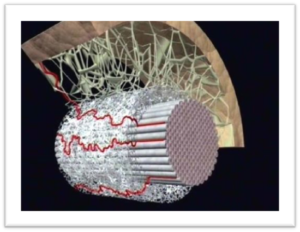
The 4 main chains are the
Superficial back line – runs from the feet to the back, neck head and eyebrows
Superficial front line – runs from the toes to the pelvis, up the belly to the neck and head
2 lateral lines – run along each side of the body – from the outside of the foot, outside of the ankle, weave up the sides of the body to the head
Spiral line – winds around the body and encases the body in a double helix.

Myofascial pain is a condition that affects the fascia and muscles. It occurs when the soft tissues in the body become painful and inflamed. Myofascial release focuses on reducing pain by easing the tension and tightness in the connective tissue, and in turn -the soft tissue.
For that reason, myofascial release is often used over a broad area of muscle and tissue rather than at a single point.
Fascia research sheds light on chronic pain. There is now concrete evidence that the fascia plays a huge role in the creation of soft tissue pain. As fascia has a rich, sensory nerve supply – injuries to the fascia causes contraction, which in turn causes inflammation in the soft tissue, leading to cramping, compromised gait, structural misalignment and eventually – chronic pain – all most likely away from the source of the pain.
Myofascial Release helps to reduce tension throughout your body by releasing trigger points across a broad section of your muscular system.
An example of Myofascia release
Pain complaint – in the left side neck, jaw clicked and often a ringing in the left ear.
Source of pain was found in the right side of the abdomen.
In my practice – I will
- Listen to your pain complaint, acute and chronic.
- Body read – to look at your posture / gait.
- Find the connection between your point of pain and source of pain
- To ascertain which myofascial chain to use and release
- To reduce pain – with manipulation, exercise, and time.
- I’ll need a minimum of 20 minutes, max of 30 minutes to work on you
- My treatment is not comfortable.
- Reactions to my treatment could include nausea, extreme tiredness, ‘run over by a bus feeling, increase of energy, emotional changes.
- It may take more than three sessions
- You will need to
- Drink more water
- Stretch , move.
- Not rely 100% on A
- NY therapist to fix you – your input is vital, and NO therapy will work without it
Written by Vicky Thompson

